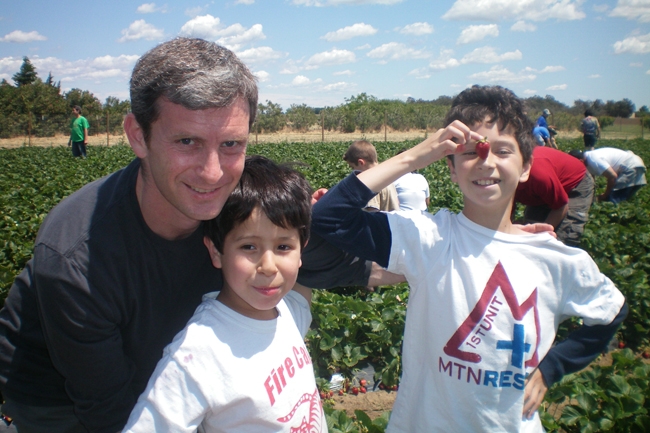A fruitful approach
I have two active young sons. They get plenty of exercise. Their diets, however, can be a challenge. They have different tastes – one could eat breakfast items all day; the other could eat dinner items all day. One likes sugary sweet foods; the other likes salty, fatty foods. My wife is a great cook who makes balanced, nutritious meals, but it’s not easy pleasing everybody. There is one thing we all can agree on: We love fruit.
We can eat fruit throughout the day. It might go with breakfast, with lunch, as a snack or mixed in with a salad at dinner. I think my kids like fruit not only because we make it available and encourage them to eat it, but because they have sampled fresh fruit at farmers markets, watched it grow in our backyard and harvested it themselves at U-pick farms.
The federal government’s new MyPlate nutrition guidelines emphasize fruits and vegetables – they’re half the plate. But it’s not enough to try to force-feed your children canned carrots. Food can be fun. Giving kids a hands-on experience with fresh fruit can help them appreciate its importance. I’m no dietitian, but as a parent, I offer three tips for helping children to eat more fruits (and vegetables).
- Go to a farmers market. California has more farmers markets than any other state in the country. Find one near you at www.cafarmersmarkets.com. At a farmers market, the food and the farmers are the stars. You can sample the goods. You can ask a farmer questions. You can learn about the difference between a blood orange and a Cara Cara orange. It’s an event, but a short one. And the price is moderate.
- Grow your own produce. We’ve had mixed results with this one. Tomatoes came out great one year, were poached by animals another. We have a couple of fruit trees in our yard, but they don’t get much sun and the fruit isn’t sweet. We have had success with herbs, though, and find that our sons will munch on a mint leaf or point out the plants to friends and family. On a recent visit to their aunt and uncle’s house, they picked giant lemons and enjoyed homemade lemonade. No matter how small the effort, it shows children the life cycle of a plant, the anticipation of healthy food and, hopefully, the payoff of plentiful produce for a low cost.
- Visit a U-pick farm. We get an early start to summer by visiting U-pick farms in Brentwood. One son prefers cherries; the other prefers strawberries. Between the two, we have a daylong excursion that provides a weeklong supply of delicious bite-sized fruit for a reasonable price. Brentwood’s cherry season typically lasts from May to June. You can still find peaches, strawberries and other crops there in July. We also went apple picking in September in Sonoma County. U-picking is part of the broader field of agritourism, which also can include farm stands, tours, fairs and festivals. The University of California maintains a statewide agricultural tourism directory at http://calagtour.org. Check it out and may your efforts be fruitful.
Comments:
Now fresh fruits and nuts are a staple at my house, rather than twinkies and chips. If I could only get my three great-grandsons to follow the guidelines you have adapted with your children!
Thanks for the insights. Keep up the good work.


Posted by Barbara Grady-Ayer on July 8, 2011 at 6:30 PM